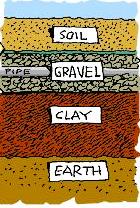
|
About the benchmark problems . . . Download Benchmark
Problems |
|
|
The tables below contain lists of previously published solutions to
the benchmark problems. Note: only the Nighthawk simulation engine is distributed with the benchmark problems. Click here for an Excel spreadsheet version of the tables. Please contact L. Shawn Matott (lsmatott@buffalo.edu) to request table additions. |
|
| Previously published solutions using the Nighthawk simulation engine. . . | ||||||||||||||||||||||||||||||||||||||||||||||||||||||||||||||||||||||||||||||||||||||||||||||||||||||||||||||||||||||||||||||||||||||||||||||||||||||||||||||||||||||||||||||||||||||||||||||||||||||||||||||||||||||||||||||||||||||||||||||||||||||||||||||||||||||||||||||||||||||||||||||||||||||||||||||||||||||||||||||||||||||||||||||||||||||||||||||||||||||||||||||||||||||||||||||||||||||||||||||||||||||||||||||||||||||||||||||||||||||||||||||||||||||||||||||||||||||||||||||||||||||||||||||||||||||||||||||||||||||||||||||||||||||||||||||||||||||||||||||||||||||||||||||||||||||||||||||||
|
||||||||||||||||||||||||||||||||||||||||||||||||||||||||||||||||||||||||||||||||||||||||||||||||||||||||||||||||||||||||||||||||||||||||||||||||||||||||||||||||||||||||||||||||||||||||||||||||||||||||||||||||||||||||||||||||||||||||||||||||||||||||||||||||||||||||||||||||||||||||||||||||||||||||||||||||||||||||||||||||||||||||||||||||||||||||||||||||||||||||||||||||||||||||||||||||||||||||||||||||||||||||||||||||||||||||||||||||||||||||||||||||||||||||||||||||||||||||||||||||||||||||||||||||||||||||||||||||||||||||||||||||||||||||||||||||||||||||||||||||||||||||||||||||||||||||||||||||
| Previously published solutions using the Mouser simulation engine. . . | ||||||||||||||||||||||||||||||||||||||||||||||||||||||||||||||||||||||||||||||||||||||||||||||||||||||||||||||||||||||||||||||||||||||||||||||||||||||||||||||||||||||||||||||||||||||||||||||||||||||||||||||||||||||||||||||||||||||||||||||||||||||||||||||||||||||||||||||||||||||||||||||||||||||||||||||||||||||||||||||||||||||||||||||||||||||||||||||||||||||||||||||||||||||||||||||||||||||||||||||||||||||||||||||||||||||||||||||||||||||||||||||||
|
||||||||||||||||||||||||||||||||||||||||||||||||||||||||||||||||||||||||||||||||||||||||||||||||||||||||||||||||||||||||||||||||||||||||||||||||||||||||||||||||||||||||||||||||||||||||||||||||||||||||||||||||||||||||||||||||||||||||||||||||||||||||||||||||||||||||||||||||||||||||||||||||||||||||||||||||||||||||||||||||||||||||||||||||||||||||||||||||||||||||||||||||||||||||||||||||||||||||||||||||||||||||||||||||||||||||||||||||||||||||||||||||
| Table definitions . . . |
|
Organic Contaminant - The type of pollutant that the barrier is
being designed to contain. Different pollutants have different
sorptive properties so each pollutant corresponds to a different
design problem. Optimal Cost - The optimal cost reported by a given solution method, or the median optimal cost if multiple trials were performed. 100-year exit mass - The predicted cumulative amount of pollutant mass exiting the liner after 100 years of transport simulation. The prescribed performance criteria is <5x10-6 g/m2. Coded layer properties - Specifies the optimal configuration of the barrier layers in terms of coded values. See readme file for mapping of coded values to corresponding layer composition. Simulation engine - The modelling program used for computing the 100-year exit mass. Use of the Mouser engine is not supported, only the Nighthawk engine is distributed with the benchmark problems. Search algorithm - The optimization algorithm. Abbreviations are as follows:
Model runs - Number of evaluations of the simulation
engine required by a single trial of the search algorithm. |
| References . . . |
| [1] Bartelt-Hunt, S.L., T.B. Culver, J.A. Smith, L.S. Matott,
and A.J. Rabideau, Optimal Design of a Compacted Soil Liner
Containing Sorptive Amendments, Journal of Environmental
Engineering, 132(7), 769-776, 2006. [2] Matott, L.S., S.L. Bartelt-Hunt, A.J. Rabideau, and K.R. Fowler, Application of Heuristic Optimization Techniques and Algorithm Tuning to Multi-layered Sorptive Barrier Design, Environmental Science & Technology, 40(20), 6354-6360, 2006. [3] Matott, L.S., A.J. Rabideau, and K. Bandilla, Incorporating Nonlinear Isotherms into Robust Multilayer Sorptive Barrier Design, Advances in Water Resources, 23(11), 1641-1651 2009. [4] Matott, L.S., B. Tolson, and M. Asadzadeh, A Benchmarking Framework for Simulation-based Optimization of Environmental Models, Environmental Modelling & Software, submitted October, 2010. |
